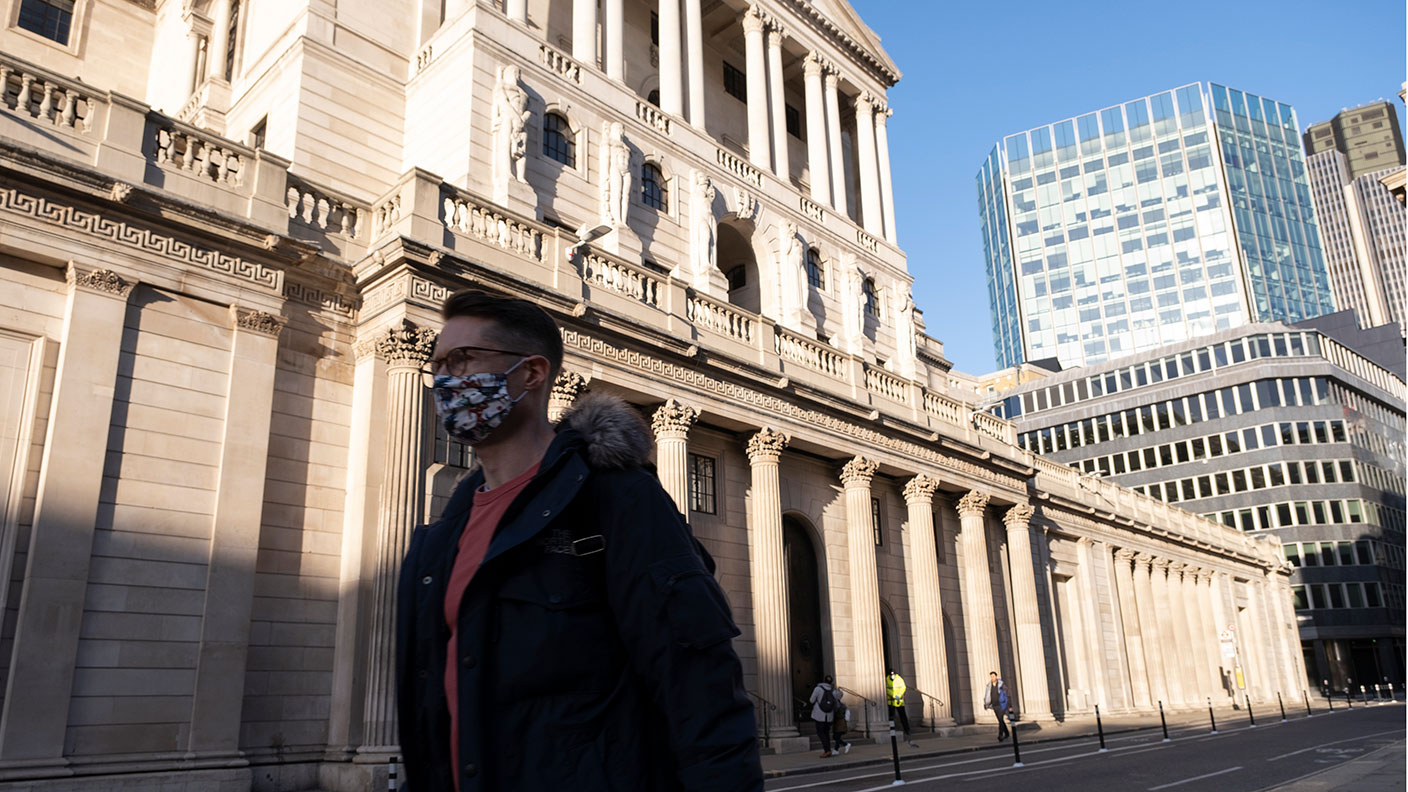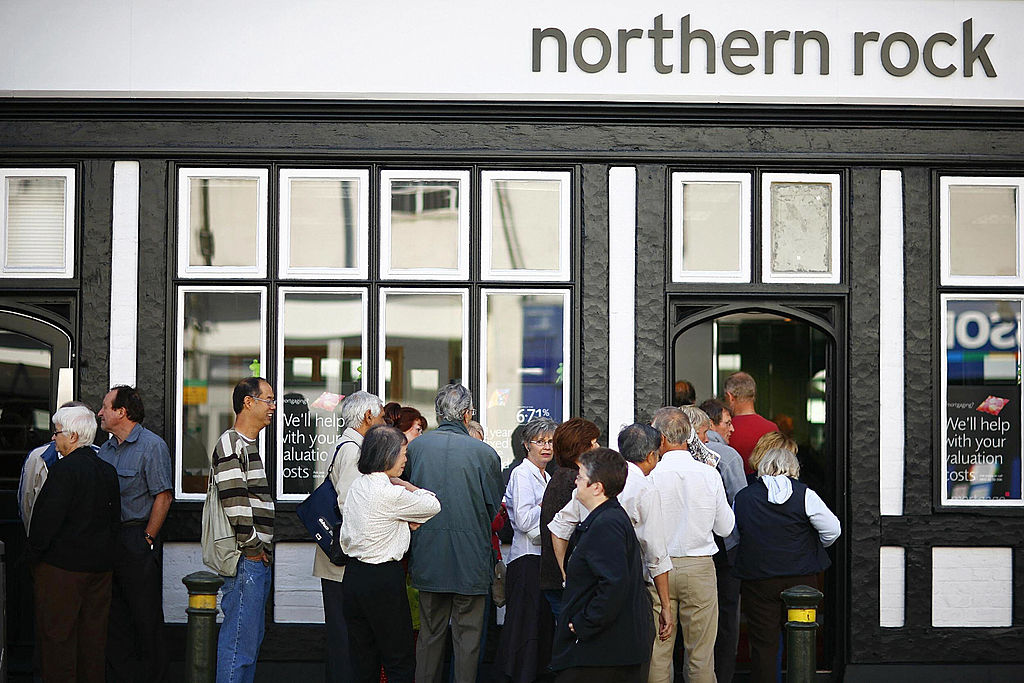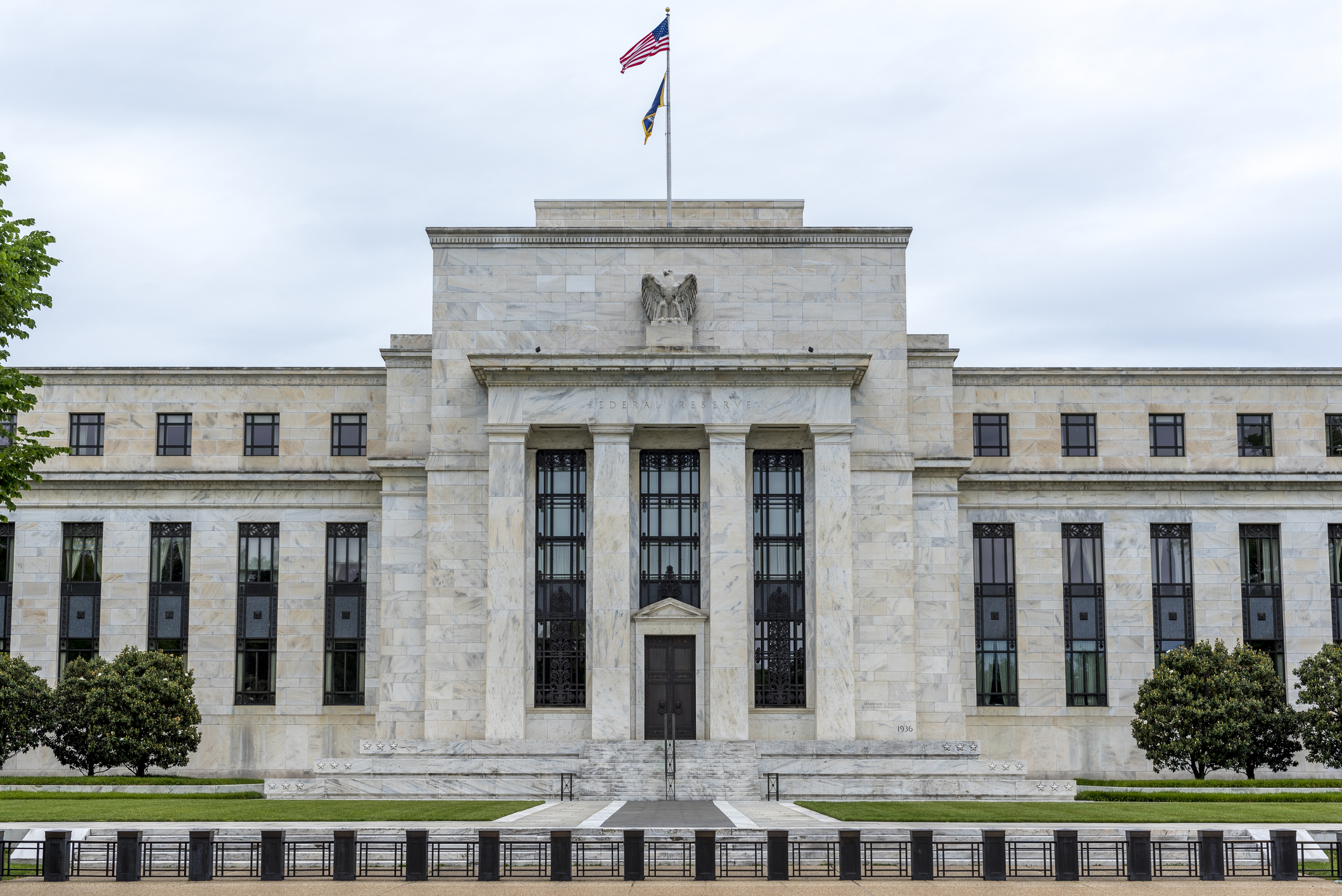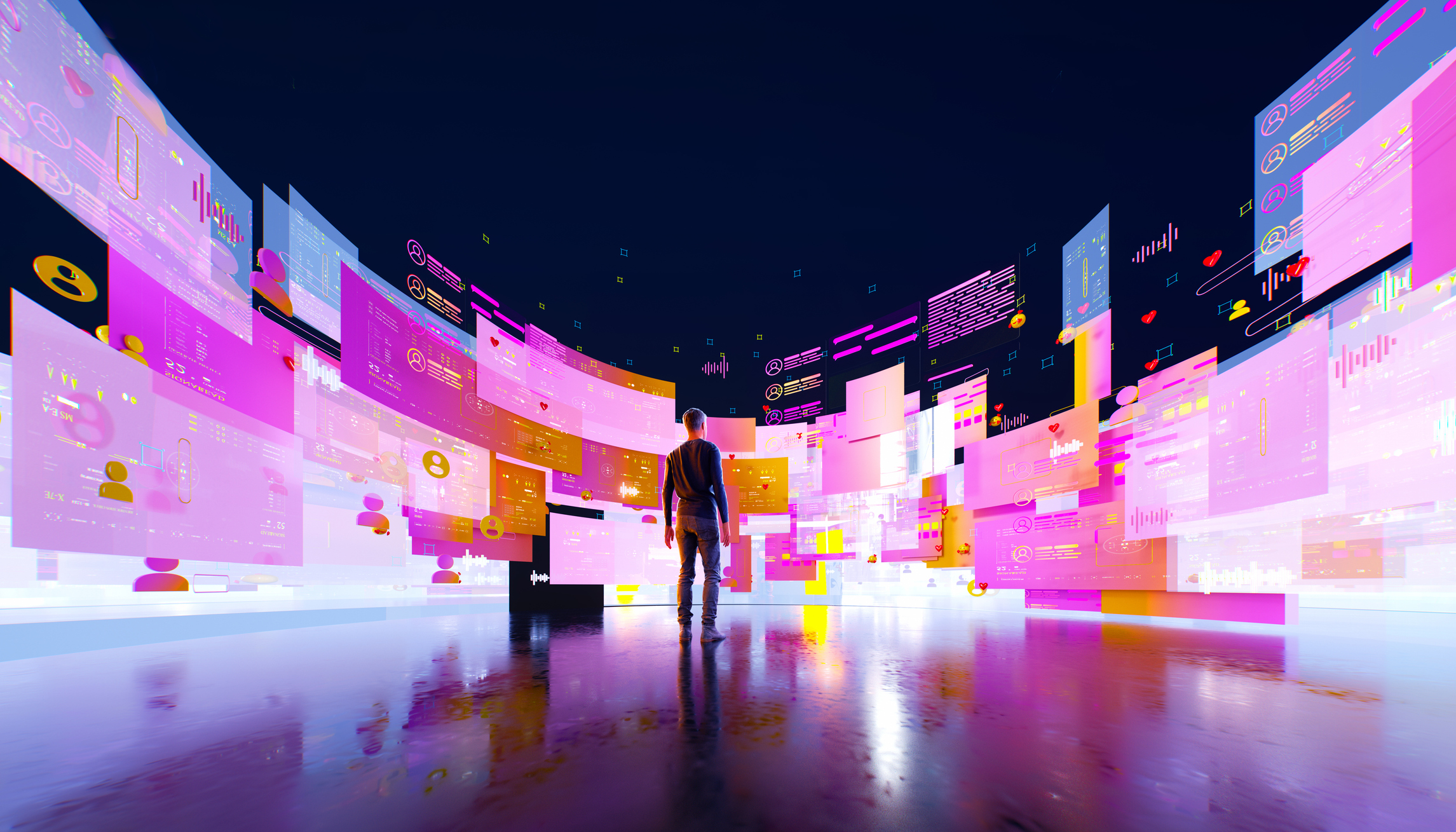Who is the Bank of England’s new £150bn of money printing really aimed at?
The Bank of England has said it is to print a further £150bn to dampen the effects of the second lockdown on the economy. But there's more to it than that, says John Stepek.


Britain is back in lockdown. To celebrate the occasion, the Bank of England has said that it will print more money.
In theory, printing money to buy bonds persuades consumers to borrow more money to spend, and businesses to borrow money to invest. In practice, you’d have to be stupid to believe that the average business owner is going to borrow to expand in the middle of a global pandemic when they’re actively being told to close down.
So it raises the question – what’s the point?
MoneyWeek
Subscribe to MoneyWeek today and get your first six magazine issues absolutely FREE

Sign up to Money Morning
Don't miss the latest investment and personal finances news, market analysis, plus money-saving tips with our free twice-daily newsletter
Don't miss the latest investment and personal finances news, market analysis, plus money-saving tips with our free twice-daily newsletter
The Bank of England has a problem – creditworthiness is deteriorating fast
This morning, the Bank of England announced its latest monetary policy decision. It will keep the UK’s main interest rate at 0.1%. That was expected. The surprise came in the form of more money printing. Economists had expected the Bank to print another £100bn. Instead, quantitative easing (QE) was expanded by £150bn. In other words, the Bank will now buy £150bn more of UK government debt than previously planned.
What was the rationale? Well, we’re going into a second lockdown. So the monetary policy committee reckoned that “announcing further asset purchases now should support the economy and help to ensure the unavoidable near-term slowdown in activity was not amplified by a tightening in monetary conditions that could slow the return of inflation to target.”
Put more simply, the Bank knows that lockdown will hammer the economy. The Bank really doesn’t have many things that it can do about that. We talk about “tools in the box” but ultimately central banking boils down to two settings: tighter monetary policy or looser monetary policy. The tools are merely about how you go about tightening or loosening. If the economy is heading into a shutdown, then the answer is quite clear – you want to loosen.
The problem is getting that money from the printing press to the real world. Back in the day, the transmission mechanism was clear: you lowered interest rates. High street banks cut the cost of borrowing, people borrowed more and asset prices went up, creating a wealth effect. For a simple example, look at the housing market. Mortgages get cheaper, people pay more for houses, house prices go up, people feel richer, they borrow money against their house to spend on home improvements and fancy holidays, the economy grows, and so on and so on.
It’s not as easy these days. The Bank – as Marcus Ashworth and Mark Gilbert point out on Bloomberg – now has a bit of a transmission problem. Firstly, the cost of borrowing can’t come down much from here. In their current form, negative interest rates are mostly designed to punish savers, not to produce negative-interest rate credit cards and mortgages.
Secondly, there’s more to the cost of credit than the Bank of England interest rate. There’s the vexing question of creditworthiness: there’s no point in lending money to someone at any rate at all if they can’t pay you back. As Ashworth and Gilbert note, “for lenders who were already nervous about borrowers being unable to pay their debts, the prospect of a second collapse in growth will prompt them to rein in their support even further.”
If you’re well off, with a secure job, and – the most important point – you already own a house with plenty of equity, the cost of a mortgage hasn’t changed much. But the average rate on a two-year fixed-rate mortgage, with a 10% deposit down, is now at above 3.3%, the “highest level in more than five years”.
Who is the Bank really printing money for?
Let’s be clear. The Bank’s extra money printing does nothing directly to push the high street banks into making cheaper loans. These are commercial organisations. Unless the government actively indemnifies them against losses made on their loans, then they have to consider creditworthiness, and however you look at it, a nationwide lockdown reduces creditworthiness on average.
In other words, lockdown tightens monetary conditions. If the Bank wants to push against that – which it does – then printing more money is about the only option it has (they’re still looking into negative interest rates apparently).
So what does it do? Sometimes printing money is useful for weakening the currency. In the eurozone, for example, that’s important because many of its member states struggle with an overly strong Germanic euro when they need a weaker Italian euro. But it’s not such a big deal for the UK. Sterling has been trading on the Brexit discount for four years now and our economy rarely flirts with deflation. So this isn’t about the currency.
The only real transmission mechanism the Bank can now rely on is the government. The government has imposed lockdown and it’s up to the government to figure out measures to minimise the impact as much as possible. That’s why Rishi Sunak is no doubt hammering away on his big calculator and an Excel spreadsheet as we speak.
It looks, for example, as though the chancellor will probably extend the furlough scheme even further beyond the planned end of the current four-week lockdown. So the Bank’s real job now is to make it as easy as possible for the government to get hold of the money that it needs in order to fund those mitigation measures. So you can see QE as simply being the act of oiling the gilt market. Make sure it's working smoothly. Make sure interest rates don’t rise or even think about spiking.
In other words, the Bank is printing money to make it easier for the government to spend. It’s not quite the same as directly financing the deficit. But it’s a long, long way from merely tinkering with the cost of credit.
This gradual creep towards pure money printing, by the way, is why we think inflation will end up being the biggest theme of the coming decades. I discuss that a lot more in the 20th anniversary edition of MoneyWeek magazine, out tomorrow. If you don’t already subscribe, get your first six issues free here.
Get the latest financial news, insights and expert analysis from our award-winning MoneyWeek team, to help you understand what really matters when it comes to your finances.
John Stepek is a senior reporter at Bloomberg News and a former editor of MoneyWeek magazine. He graduated from Strathclyde University with a degree in psychology in 1996 and has always been fascinated by the gap between the way the market works in theory and the way it works in practice, and by how our deep-rooted instincts work against our best interests as investors.
He started out in journalism by writing articles about the specific business challenges facing family firms. In 2003, he took a job on the finance desk of Teletext, where he spent two years covering the markets and breaking financial news.
His work has been published in Families in Business, Shares magazine, Spear's Magazine, The Sunday Times, and The Spectator among others. He has also appeared as an expert commentator on BBC Radio 4's Today programme, BBC Radio Scotland, Newsnight, Daily Politics and Bloomberg. His first book, on contrarian investing, The Sceptical Investor, was released in March 2019. You can follow John on Twitter at @john_stepek.
-
 The graphene revolution is progressing slowly but surely
The graphene revolution is progressing slowly but surelyEnthusiasts thought the discovery that graphene, a form of carbon, could be extracted from graphite would change the world. They might've been early, not wrong.
-
 How Javier Milei led an economic revolution in Argentina
How Javier Milei led an economic revolution in ArgentinaFollowing several setbacks, Argentine president Javier Milei's pro-market reforms have been widely endorsed in a national poll. Britain will need the same
-
 How have central banks evolved in the last century – and are they still fit for purpose?
How have central banks evolved in the last century – and are they still fit for purpose?The rise to power and dominance of the central banks has been a key theme in MoneyWeek in its 25 years. Has their rule been benign?
-
 'Governments are launching an assault on the independence of central banks'
'Governments are launching an assault on the independence of central banks'Opinion Say goodbye to the era of central bank orthodoxy and hello to the new era of central bank dependency, says Jeremy McKeown
-
 Why investors can no longer trust traditional statistical indicators
Why investors can no longer trust traditional statistical indicatorsOpinion The statistical indicators and data investors have relied on for decades are no longer fit for purpose. It's time to move on, says Helen Thomas
-
 The Bank of England can’t afford to hike interest rates again
The Bank of England can’t afford to hike interest rates againWith inflation falling, the cost of borrowing rising and the economy heading into an election year, the Bank of England can’t afford to increase interest rates again.
-
 Interest rates held at 5.25% again
Interest rates held at 5.25% againThe Bank of England has kept rates at 5.25% again, in a widely anticipated move. We look at what it means for your money - and what the Bank’s next move could be
-
 Bank of England holds interest rates at 5.25%
Bank of England holds interest rates at 5.25%The Bank has kept rates at 5.25%, ending its run of 14 consecutive increases. We look at what it means for your money - and what the Bank’s next move could be
-
 UK inflation slumps to 6.7% in August
UK inflation slumps to 6.7% in AugustThe latest data shows inflation slowed faster than expected in August, a welcome relief for consumers and the Bank of England
-
 UK wages grow at a record pace
UK wages grow at a record paceThe latest UK wages data will add pressure on the BoE to push interest rates even higher.
